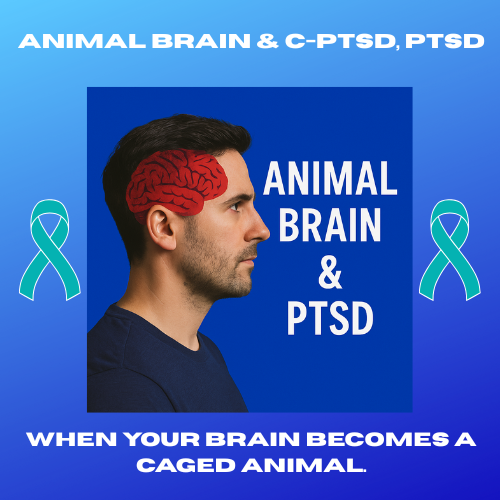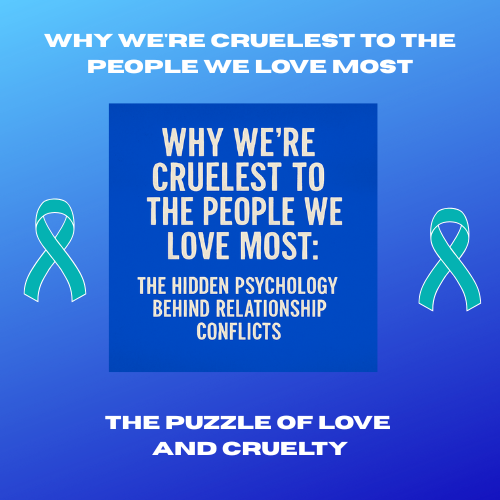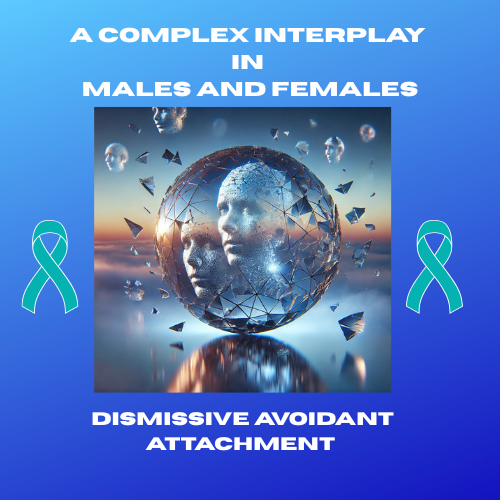When Heroes Hurt.
The Inheritance of Pain: Understanding PTSD and Its Roots
Trauma doesn’t begin on the battlefield. The seeds of trauma are often planted long before a soldier dons their uniform and steps into the chaos of war. The moment of overwhelming stress is but a culmination, a layering of experiences, beliefs, and physiological responses that have often been years, even generations, in the making.
To truly understand PTSD, especially in a veteran, we must trace its origins back to where trauma begins: the womb!
The Epigenetics of Trauma: A Legacy Passed Down
A child is born with a body already carrying the echoes of their ancestors’ pain. This isn’t a poetic metaphor; it’s science.
Epigenetics, the study of how behaviors and environments affect gene expression, has revealed that trauma can be biologically inherited.
For example, children of Holocaust survivors have shown elevated stress hormone levels, even if they’ve never directly experienced the events their parents endured.
The womb is not a vacuum. When a mother experiences chronic stress, fear, or trauma, her body floods with cortisol and other stress hormones.
These biochemical signals shape the developing fetus, essentially “preparing” the child for a world fraught with danger. Without ever witnessing the source of the trauma, the child emerges into life with a nervous system already wired for hypervigilance, fear, and heightened sensitivity to threats.
The foundation for PTSD is laid in the child even before they utter their first cry.
Childhood: The Cementing of Trauma
For a child predisposed to trauma, their early environment becomes a magnifying glass. Every experience, big or small, has the potential to either soothe or exacerbate their already sensitive system. Unfortunately, many children grow up in environments where trauma compounds rather than heals.
Perhaps it’s a father haunted by his struggles, lashing out in anger. Perhaps a mother grapples with a world that has failed her. Maybe it’s neglect, bullying at school, or the quiet, insidious trauma of being unseen and unheard. Each moment of fear, shame, or abandonment becomes another layer of the foundation.
And because the brain is still developing, these experiences don’t just leave emotional scars; they physically alter the brain. The amygdala, the brain’s fear center, becomes overactive. The prefrontal cortex, responsible for logic and impulse control, struggles to regulate the flood of emotions.
Trauma doesn’t just “happen” to a child; it becomes part of who they are, embedded in their neural pathways.
The Subconscious and the Reticular Activating System: Where Trauma Becomes a Blueprint
By the time we’re adults, 95% of our behaviors are driven by the subconscious mind.
For a traumatized child, this means that their early experiences have become the blueprint for how they navigate the world. The subconscious is a powerful force, but it lacks discernment. It learns through repetition and emotional intensity, encoding every traumatic event as a rule to live by.
“I am not safe.”
“The world is dangerous.”
“I must fight to survive.”
These beliefs may have served a purpose during moments of real danger, but over time, they hardwire themselves into the psyche.
Acting like a gatekeeper, the reticular activating system (RAS), a network of neurons in the brainstem, protects those deeply held beliefs. Think of the RAS as a firewall for your subconscious mind. Its primary role is to filter the millions of pieces of information your brain receives, allowing only what aligns with your subconscious beliefs to come through.
For a person shaped by trauma, the RAS becomes a silent enforcer of their internal programming. If your subconscious believes, “I am not worthy,” the RAS will filter out evidence that contradicts this belief and amplify anything that confirms it.
This is why affirmations or new ideas often “bounce off” when spoken without conviction; they are blocked by the RAS, which is conditioned to maintain the status quo.
However, there is a way to bypass this firewall: heightened emotional states. When emotions are intense, whether it’s during moments of deep reflection, sorrow, or even joy, the RAS becomes more receptive to new programming.
This is where affirmations, spoken with emotion and conviction, can begin to rewrite the subconscious script.
The Mental Stronghold: Family, Society, and the Reinforcement of Trauma
Trauma doesn’t exist in a vacuum; societal expectations and cultural norms all play a role in shaping how a person processes their pain. For many, these external influences don’t offer healing but instead reinforce the mental strongholds of trauma.
Families may pass down limiting beliefs: “We don’t talk about our problems.” “You just have to toughen up.” Schools may prioritize conformity over individuality, punishing children who don't conform, which reinforces resilience while dismissing vulnerability, leaving little room for those who struggle to process their pain.
By the time a young adult considers joining the military, layers of reinforcement often compound their trauma. Suppress their emotions, distrust others, and carry their burdens alone. And then, they enter a system designed to amplify these tendencies.
The Military: Trauma in Overdrive
The military is an environment unlike any other, one where individuality is stripped away to create a unified force. For many, it’s a calling.
For others, it’s an escape. But for all, it’s an environment that introduces new layers of stress and trauma.
Basic training is designed to break you down and rebuild you. Soldiers are taught to suppress fear, pain, and hesitation in favor of discipline and obedience. This is necessary for survival on the battlefield, but it often comes at a cost.
The exact mechanisms that make a soldier effective in combat, emotional suppression, hypervigilance, and desensitization, are the very ones that make reintegration into civilian life so difficult.
Combat introduces another level of trauma: the moral injuries of war. Witnessing death, taking lives, and experiencing the chaos of combat often leave deep psychological wounds.
These aren’t just memories; they’re experiences that replay in the mind, body, and soul long after the soldier has left the battlefield.
The Path to Healing: A Deprogramming Manifesto
Healing from PTSD and C-PTSD is not about “fixing” what’s broken. It’s about reclaiming what’s been lost. The trauma may have shaped you, but it does not define you. Here’s where the journey begins:
Acknowledge the Inheritance: Understand that your trauma may not have started with you. Forgive yourself for the patterns you’ve inherited, and commit to breaking the cycle.
Bypass the RAS with Affirmations in Emotional States: The Reticular Activating System acts as a firewall, shielding the subconscious from contradictory beliefs. To penetrate this barrier, use affirmations during heightened emotional states. Speak them out loud with conviction, letting your emotions charge your words. For example:
Replace “I am not safe” with “I am safe right now, and my safety grows every day.”
Replace “I am alone” with “I am deeply connected, valued, and loved.”
Replace “I have to fight to survive” with “I am free to live, thrive, and experience joy.”
Repetition is key. Emotions amplify the impact, allowing your affirmations to bypass the RAS and rewire the subconscious script.
Create Safety: Healing requires a sense of safety, both internal and external. Build relationships with people who understand and support your journey. Create routines that ground you. Let your body learn what it feels like to exhale deeply and exist without tension.
Challenge the Strongholds: Question the beliefs you’ve carried from your family, society, and culture. Are they serving you, or are they hindering your progress? Examine them. Replace them with beliefs that empower you.
Seek Professional Help: Trauma is complex, and healing is not a journey you have to take alone. Therapists, counselors, and support groups can provide the tools and understanding you need.
Reconnect with the Present: Trauma Keeps Us Trapped in the Past. Practices such as grounding exercises and deep breathing can help you anchor yourself in the present moment.
Remember: you are not your trauma. You are the person living in this moment, and that moment is where healing begins.
Final Thoughts
PTSD is not a weakness. It is a testament to the strength it takes to survive.
For veterans and anyone who has walked through the fire of trauma, healing is possible. It begins with understanding where the pain comes from, how it has shaped you, and the steps you can take to reclaim your life. The journey is not easy, but it is worth it because you are worth it.
2025© www.soundthetrumpet.org









